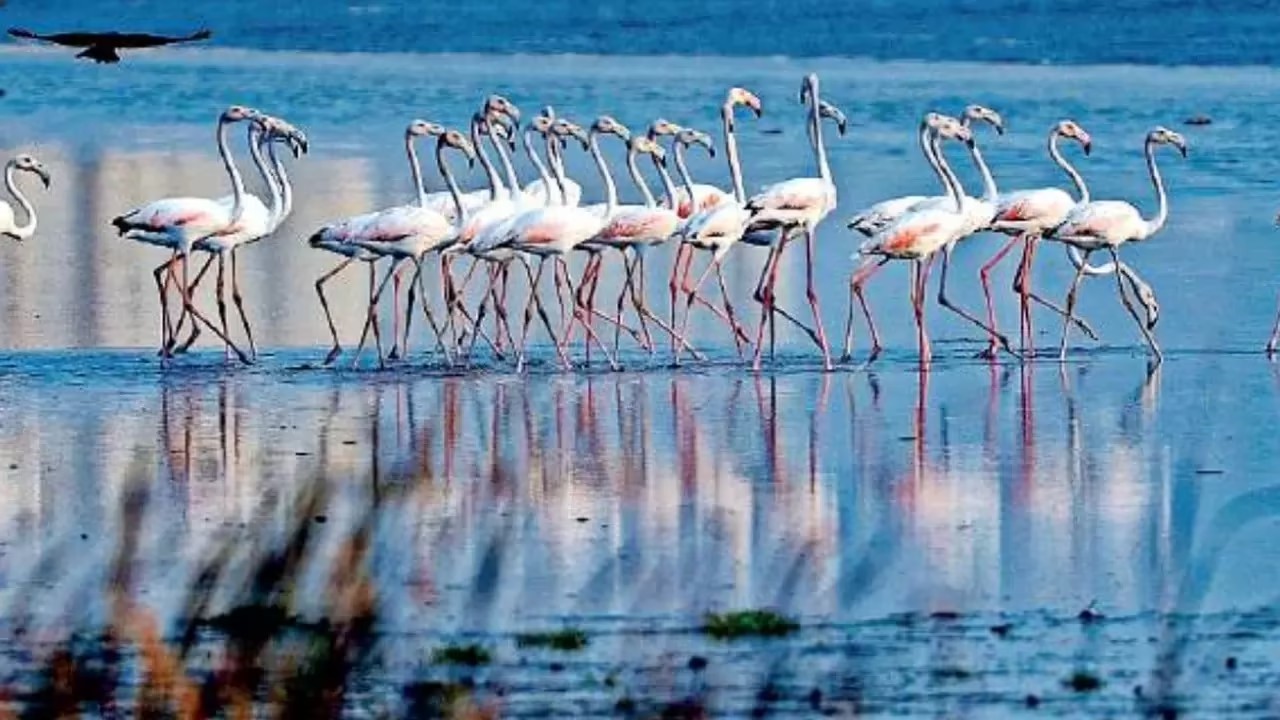Two Rajasthan Wetlands Gain International Ramsar Recognition
Two Rajasthan Wetlands Gain International Ramsar Recognition
Why in the News ?
Khichan in Phalodi and Menar in Udaipur, Rajasthan, have been added to the Ramsar list of wetlands of international importance, bringing India’s total to 91 sites. This reflects India’s ongoing commitment to wetland conservation and biodiversity protection, aligning with broader ecosystem protection goals and government initiatives to combat pollution, including plastic waste.
New Additions to Ramsar Sites:
- Two new wetlands from India—Khichan (Phalodi) and Menar (Udaipur), both in Rajasthan—have been officially added to the Ramsar list.
- This brings the total number of Ramsar sites in India to 91, making India one of the leading nations in wetland conservation and biodiversity protection.
- The announcement was made by Union Environment Minister Bhupender Yadav, highlighting the government’s commitment to environmental conservation and sustainable development.
Significance of Ramsar Recognition
- Ramsar sites are wetlands of international importance, protected under the Ramsar Convention, which aims at conservation and sustainable use of wetlands.
- These sites are crucial for:
- Biodiversity conservation
- Flood control
- Groundwater recharge
- Supporting migratory birds
- Recognition enhances global visibility and opens up international cooperation and funding opportunities for wetland management and ecosystem protection, including efforts to reduce plastic pollution in these sensitive areas.
India’s Conservation Efforts
- The minister highlighted that this achievement showcases Prime Minister Narendra Modi’s focus on environmental sustainability and climate change action.
- It aligns with India’s broader goals under Mission LiFE (Lifestyle for Environment) and global environmental commitments, including efforts to reduce plastic pollution, promote waste management, and develop plastic alternatives.
- The recognition reflects India’s growing role in global ecological leadership and its emphasis on local conservation initiatives and green initiatives, including the implementation of Plastic Waste Management Rules and the promotion of sustainable packaging.
Wetlands and Ramsar Convention: Key Points |
|
● Wetlands are areas of marsh, fen, peatland, or water, natural or artificial, static or flowing, with water depth not exceeding 6 meters at low tide (Ramsar definition).
○ Water source and groundwater recharge ○ Flood and storm buffer ○ Natural water purifiers ○ Habitats for migratory birds ○ Biodiversity hotspots (e.g., Keibul Lamjao in Manipur)
○ Focuses on wetland conservation and wise use ○ Came into force in 1975, celebrated on Feb 2 ○ Three Pillars: Wise use, site designation, international cooperation.
|




